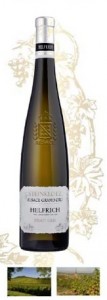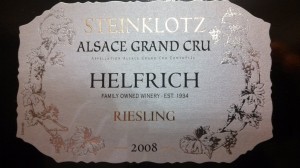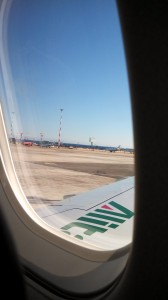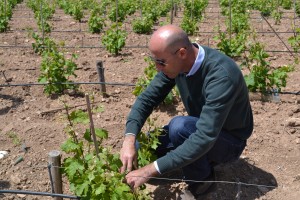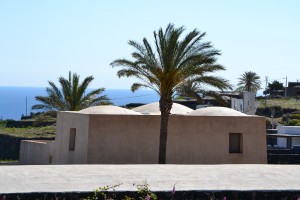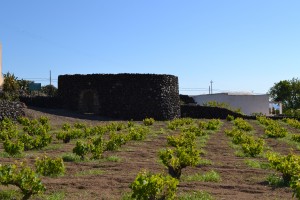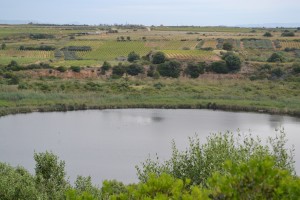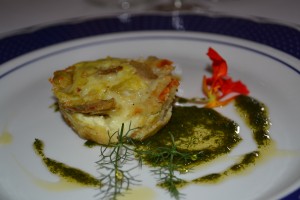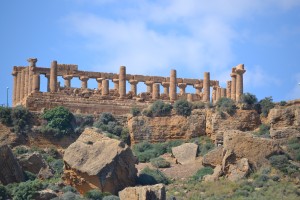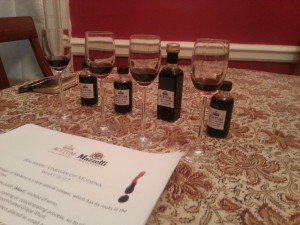 More proof that everything sounds better in French? Sour wine, anyone? I didn’t think so. But, vinegar – from the French words vin (wine) and aigre (sour) – is a much more palatable sounding product. In fact, some vinegars are quite coveted in the culinary world, commanding high prices at specialty shops (more on that later).
More proof that everything sounds better in French? Sour wine, anyone? I didn’t think so. But, vinegar – from the French words vin (wine) and aigre (sour) – is a much more palatable sounding product. In fact, some vinegars are quite coveted in the culinary world, commanding high prices at specialty shops (more on that later).
Like wine, vinegar has become very popular as of late, touted with a myriad of benefits and uses. Recent research findings show a positive correlation between vinegar consumption and an increase in calcium absorption and a reduction in fat build-up as well as having antiglycemic properties in diabetics. Outside the kitchen, vinegar is removing wine stains from clothing, cleaning windows without streaks and eliminating water marks on wood.
With an entwined etymology, vinegar and wine are similar yet so different. Both entail fermentations and find their way to the table. But, while one is great for drinking, the other is most often best left for salads and marinades. Moreover, whereas winemakers are careful to limit exposure to air (and oxygen, specifically), vinegar producers are more welcoming. In fact, they need to promote the acetobaceter group of bacteria to engage in a secondary fermentation to first convert the must to an aldehyde and then eventually to acetic acid.
Produced from a diverse set of ingredients, vinegars range from the basic white, distilled variety to apple cider and rice wine (commonly produced in Asia) among many others. And, true to its name, some vinegar is actually made from wine, or at least, from grapes. As long as you have natural sugars that can be converted to alcohol, you have the potential makings of vinegar.
But there’s vinegar and then there’s Vinegar. High end vinegar is much more complex and concentrated and can (almost) be drunk straight (I said almost).
In this regard, Balsamic Vinegar is another story entirely and can be a confusing one at that. Head to your big box market and you’ll find large volume bottles of Balsamic with small price tags (Costco’s Kirkland Signature Balsamic Vinegar is $12.56 for 33.8 oz). Meanwhile, Sur la table has 3.5 oz of the “good stuff” priced at $179.95 and the same quantity of the “really good stuff” at Linens-n-Things will set you back $735.40. As I said, confusing.
With a history dating back to the Romans, Balsamic Vinegar of Modena is held in high regard and is the standard bearer for quality balsamic vinegar. Obtained through the reduction of cooked or concentrated grape must – in particular, Trebbiano grapes grown within the town of Modena (situated in Italy’s Emilia-Romagna region) – the must is placed into small barrels where it slowly ferments. Through the fermentation process, this traditional product is converted into acetic acid and also becomes more concentrated as it evaporates. Each year, the contents of the barrel are transferred into a smaller barrel of differing wood type, such as chestnut, juniper, cherry or oak, further adding to the complex character of the finished product.
As a Protected Designation of Origin (PDO) product, the aging process requires a minimum of 12 years and all aspects of production must adhere to the rules and regulations set out by the consortium, similar to that of a PDO wine (i.e. Chianti Classico or Barolo). This product is legally called Traditional Balsamic Vinegar of Modena and has two Certified Qualities – 12 Years (which are designated with a burgundy-colored seal) and 25 Years (which bear a gold seal). Another PDO-level vinegar is the Traditional Balsamic Vinegar of Reggio Emilia, which is identically made, differing only in the specified production area (the province of Reggio Emilia, adjacent to Modena) and bottle type in which it must be packaged.
Given the time and expense to produce this coveted product, other less artisanal products have found their way to the marketplace, but without any rules or regulations governing what could or couldn’t be included on the label, it was caveat emptor.
Thankfully, in 2009, a Protected Geographic Indication (PGI) was granted for Balsamic Vinegar of Modena, with production codified and limiting the use of “Modena” to these and the PDO products. While not as labor intensive to make, the PGI product is carefully controlled, with the production area specified within the provinces of Modena and Reggio Emilia. Its much shorter aging period ranges from a minimum of 60 days to three years. Aging claims are limited to the words “aged” for that handful of products aged more than 3 years.
Instead, the Balsamic Vinegar of Modena PGI products adhere to the LEAF quality system, which was initially implemented by Acetum. This professional grading system of the Balsamic Vinegar of Modena PGI is the only independently (3rd party) certified system and provides greater clarity for the consumer. With four quality designations – 1 Leaf, 2 Leaves, 3 Leaves and 4 Leaves – the LEAF system is based on based on sensory and laboratory analysis taking several characteristics/dimensions into account. After analysis is completed, the products are labeled accordingly.

In the interest of science, journalism and fun, the author conducted a formal tasting of the four LEAF categories of Balsamic Vinegar of Modena PGI from Acetum. I think my tasting notes correspond well to the flavor profiles stated in the LEAF system, which means that it should serve you well in selecting your vinegar.
TASTING NOTES
ONE LEAF: Intense nose with woody note, acidic/sharp on the nose. Dry, high acid, sharp, savory quality. Long length.
TWO LEAVES: Intense nose with spice, wood, fig and exotic notes. Off-dry with sweeter, woody note, fig, roasted/candied fig, slightly smoother. Long length.
THREE LEAVES: Intense nose, but less sharp than the previous two. Cheesy/leesy, cocoa, roasted nuts, more viscous appearance. Not very sharp/smoother palate, with intense sweetness and fuller body. Roasted nuts, dried fig, honey. Very long length.
FOUR LEAVES: Most viscous of the four. Syrupy appearance. Intense, rich nose – smoked meat, roasted nuts, caramel, mushroom. Medium sweet, syrupy texture, very smooth. Dried fig, candied nuts, toffee, treacle, woody and spice. Very long length.
And, in terms of pricing, a quick search on Amazon.com revealed that 500ml of Two Leaves quality Balsamic Vinegar of Modena PGI cost $10.00 while 250ml of Four Leaves quality Balsamic Vinegar of Modena PGI was priced at $20.00.
For more general information on vinegar, check out the Vinegar Institute and for more details on the Acetum line of vinegars, see Modena Fine Foods’ website.
And there you have it, the quality pyramid of Balsamic Vinegar. Enjoy!
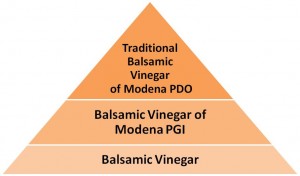
 I’ve just returned from the American Wine Society‘s annual conference where I presented a session on Sicilian wines. As you may know, I had the wonderful opportunity to visit this amazing Italian region back in May. So, it was with great pleasure that I shared my experiences with seminar participants.
I’ve just returned from the American Wine Society‘s annual conference where I presented a session on Sicilian wines. As you may know, I had the wonderful opportunity to visit this amazing Italian region back in May. So, it was with great pleasure that I shared my experiences with seminar participants.
